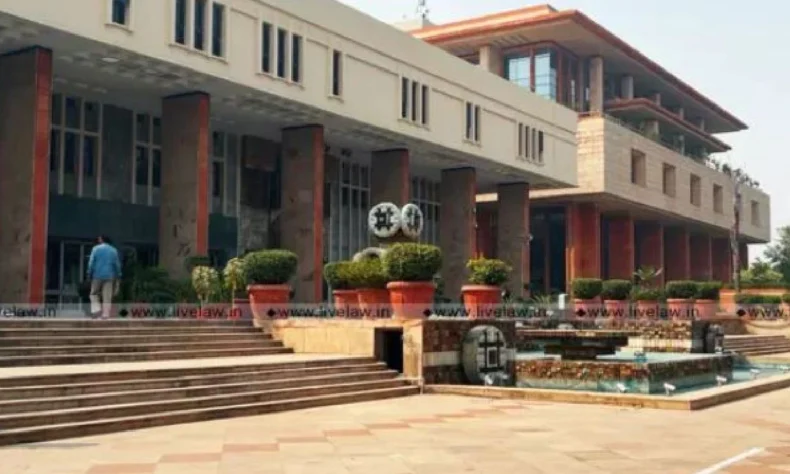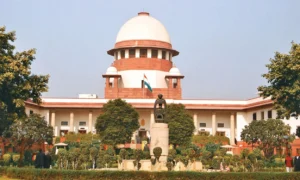
By Sujit Bhar
When Justice Tejas Karia of the Delhi High Court passed an injunction order on November 6, restraining 26 rogue websites from illegally streaming the ongoing Serie A Championship, it was not merely a victory for DAZN Limited, the exclusive global rights holder of the event. It was a reminder of how fragile and undermined India’s copyright ecosystem remains—especially in the digital entertainment and sports broadcasting sectors.
DAZN, a British over-the-top (OTT) sports streaming and entertainment platform with a global presence across 200 markets and a reported revenue of $3.2 billion in 2023, had approached the Delhi High Court seeking urgent protection of its broadcast and digital streaming rights. The company alleged that several websites were illegally streaming live Serie A matches, communicating its copyrighted content to the public without authorization, and thereby diluting the commercial value of its exclusive rights.
The High Court, acknowledging DAZN’s claim of prima facie infringement, issued a comprehensive restraining order—prohibiting the identified websites from hosting, rebroadcasting, or communicating any part of the Serie A Championship. The order also empowered DAZN to report new infringing websites for real-time blocking through domain registrars and ISPs, a mechanism popularly known as the “Dynamic+ injunction”, first established in Universal City Studios LLC vs Dotmovies.baby.
This move by the Court, though welcome, raises larger systemic questions about copyright enforcement in India—a nation that continues to grapple with digital piracy, indifferent audiences, and a slow judicial process that often renders legal remedies ineffective by the time they are enforced.
LAW’S ACHILLES HEEL
Copyright law in India, governed primarily by the Copyright Act, 1957, offers an elaborate framework of protection to creators, producers, and broadcasters. Yet, enforcement remains the Achilles heel. Whether it is films, television content, or sports broadcasts, infringement is widespread and persistent.
Digital piracy has evolved from physical duplication to sophisticated online streaming networks operating across multiple domains, mirror sites, and proxy servers. In most cases, these websites are registered outside India, using offshore hosting and anonymous domain registrations, making them almost immune to local prosecution.
The DAZN case is a classic instance of how exclusive broadcast rights—acquired at significant financial cost—can be rendered almost meaningless in practice. Despite being the official rights holder of Serie A, DAZN found its live streams being mirrored and circulated within hours of the matches going live. Such unauthorized dissemination not only leads to massive financial losses, but also erodes the very basis of the exclusivity on which sports broadcasting thrives.
What is more worrying is the normalization of such acts. Many Indian consumers still perceive digital copying or streaming from unauthorized sources as a harmless indulgence. The concept of “intellectual property”—intangible, but valuable—has not yet taken firm root among a significant section of the population. The result is a thriving underground market for pirated content and an uphill battle for rights owners.
GLACIAL PACE OF JUSTICE
India’s judicial system is notoriously overburdened, and intellectual property disputes, though prioritized in recent years, still face significant delays. In the world of sports broadcasting, time is of the essence. A live event lasts for a few hours; if unauthorized streaming continues during that window, even the swiftest judicial intervention later becomes meaningless.
In this context, Justice Karia’s order is remarkable for its proactive nature. By invoking the “Dynamic+ injunction” model, the Court allowed DAZN to act swiftly against any newly discovered rogue sites—even without returning to court each time. This provision for real-time blocking acknowledges the speed and mutability of digital infringement.
However, this level of judicial responsiveness is still the exception rather than the rule. Most rights holders, particularly smaller broadcasters and regional content creators, cannot afford the cost and time of repeated litigation. Their complaints often languish in procedural backlogs while infringers continue to operate openly.
The irony is that while copyright law recognizes the principle of “exclusive economic rights”, enforcement mechanisms operate at a pace that defeats the very purpose of exclusivity. Legal protection delayed is legal protection denied—and in the fast-moving digital environment, delay often translates into irreversible commercial harm.
VIEWER INDIFFERENCE
A crucial and often ignored dimension of India’s piracy problem lies not in the courts or laws, but in the behaviour of its viewers. The average Indian internet user is not merely a passive consumer of pirated content, but an active participant in its ecosystem.
Despite repeated public campaigns and warnings, users continue to flock to illegal streaming platforms, Telegram channels, and social media pages that provide free access to copyrighted sports and entertainment content. From European football to Hollywood films and K-dramas, everything is available online—often within hours of release—and rarely does the viewer stop to question the legality of access.
Part of the problem stems from affordability and accessibility. Premium sports subscriptions, especially for foreign leagues like Serie A or La Liga, are often priced beyond the reach of the average Indian consumer. When coupled with the lack of localized coverage or commentary, interest dwindles, and piracy becomes an easy alternative.
However, beyond economics lies a cultural issue: a deep-rooted casualness about intellectual property. The concept of “stealing” a creative or broadcast work remains alien to a public that has historically treated cultural content as communal rather than commercial. Thus, while laws evolve, public morality remains stagnant.
This indifference also disincentivizes enforcement. Law enforcement agencies, already overburdened, do not prioritize piracy cases when public pressure is absent. The absence of consumer awareness effectively ensures the perpetuation of the problem.
A CRICKET-CENTRIC MARKET
Another reason for the muted enforcement of broadcast rights violations lies in the limited commercial appeal of non-cricket sports in India. Unlike football or basketball markets in Europe or the Americas, India’s sports viewership is overwhelmingly dominated by cricket.
Even top-tier international leagues such as Serie A, Premier League, or the NBA attract niche audiences. Consequently, law enforcement agencies and policymakers often view these rights violations as low-priority issues. Rights holders, unless they are as resourceful as DAZN or Disney-Star, find little institutional support in combating piracy.
This lack of broader engagement means that sports outside cricket remain vulnerable to illegal redistribution. The public’s lukewarm interest allows rogue websites to operate without fear of backlash or reporting. Ironically, this dynamic also explains why platforms like DAZN are forced to take the legal route themselves, rather than rely on governmental or industry-wide protection. The absence of a strong enforcement ecosystem leaves global broadcasters fighting lonely battles in the Indian legal landscape.
A NEW TEMPLATE FOR DYNAMIC ENFORCEMENT
The Delhi High Court’s adoption of a “Dynamic+ injunction” in this case reflects a maturing judicial understanding of the evolving nature of digital piracy. The approach recognizes that infringers do not remain static—they constantly shift domains, IP addresses, and platforms.
Under this mechanism, once the plaintiff identifies a website as infringing, the court order automatically extends to its mirror or redirect sites, subject to notification. This ensures that new rogue sites can be blocked almost in real-time without the cumbersome process of returning to court repeatedly.
Justice Karia’s reasoning—that unauthorized dissemination of live sports broadcasts causes irreparable harm to the rights holder’s revenue and investment— echoes a growing global consensus. Courts in the UK, EU, and Singapore have already institutionalized dynamic injunctions as standard remedies for online piracy.
If implemented effectively, this model could transform the way India handles digital rights enforcement, shifting from reactive litigation to proactive, continuous protection.
The DAZN case points towards a possible future where technology and law converge to create a seamless anti-piracy infrastructure. An “automatic engagement system” could be structured around three interlinked mechanisms:
(a) Integrated monitoring platforms: Rights holders should be empowered to deploy AI-driven digital monitoring systems that track illegal streams in real time across domains, social media platforms, and peer-to-peer networks. Such systems already exist globally and can instantly identify unauthorized broadcasts by matching watermarking or signature data from the original feed.
(b) Centralised judicial authorisation: The Indian judiciary could establish a dedicated Online Content Protection Tribunal empowered to issue pre-certified dynamic injunctions. Once a broadcaster or content owner is registered, the tribunal’s orders could automatically authorize ISPs and domain registrars to block infringing URLs upon verified notice, without requiring fresh litigation each time.
(c) Regulatory integration with ISPs and domain authorities: Internet service providers and domain registrars play a critical role in curbing piracy. An automated coordination protocol—wherein verified notices from rights holders trigger immediate domain suspension or geo-blocking—could drastically reduce the time lag between detection and enforcement.
Together, these systems would create a nearly self-sustaining enforcement ecosystem, minimizing court dependency while ensuring that piracy networks are neutralized swiftly.
THE LARGER LESSON
Ultimately, the fight against piracy is not only about enforcement, but also about education and accessibility. Unless the Indian public understands the economic value of intellectual property and the moral implications of piracy, the legal victories will remain temporary.
Broadcasters and digital platforms must complement enforcement with outreach—making content affordable, localized, and accessible. When legitimate access becomes convenient and reasonably priced, the incentive for illegal streaming automatically diminishes.
Equally, schools, colleges, and media literacy programmes must integrate intellectual property education into curricula. Only when viewers recognise that every pirated stream represents someone’s unpaid labour and investment will the cultural acceptance of piracy begin to wane.
RESPECTING COPYRIGHT
The Delhi High Court’s decision in favour of DAZN Limited is a crucial moment in India’s evolving jurisprudence on digital rights. It demonstrates both the judiciary’s adaptability and the persistent vulnerabilities of India’s copyright ecosystem.
While the “Dynamic+ injunction” is a step in the right direction, systemic reform is needed to ensure that rights holders do not have to fight each battle alone. Swift judicial processes, real-time enforcement mechanisms, and a more informed public are indispensable for the survival of legitimate digital markets.
For now, DAZN’s win underscores the urgency of protecting the sanctity of creative and broadcast investments in an era where copying is easier than creating. But whether this judgment signals a long-term shift or remains a rare exception will depend on how seriously India begins to value—and defend—its intellectual property.
📰 Crime Today News is proudly sponsored by DRYFRUIT & CO – A Brand by eFabby Global LLC
Design & Developed by Yes Mom Hosting






